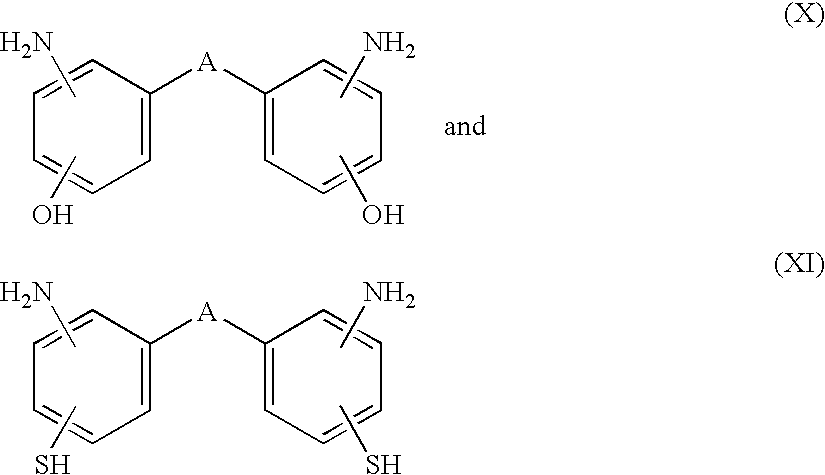Bonding perfluoroelastomers to aluminum
a technology of perfluoroelastomers and aluminum substrates, which is applied in the direction of chemical instruments, processes, synthetic resin layered products, etc., can solve the problems of corrosive environment, high temperature decomposition of adhesives and bonding agents, and difficulty in bonding to the surface of aluminum substrates
- Summary
- Abstract
- Description
- Claims
- Application Information
AI Technical Summary
Benefits of technology
Problems solved by technology
Method used
Image
Examples
example 1
[0036] The perfluoroelastomer employed was a copolymer containing 68 mole percent units of TFE, 31 mole percent units of PMVE and 1 mole percent units of perfluoro(8-cyano-5-methyl-3,6-dioxa-1-octene) prepared according to the general process described in U.S. Pat. No. 5,789,489. A curable composition was made by compounding the perfluoroelastomer with urea and carbon black.
[0037] The aluminum substrates employed were type A6061 having a surface smoothness (prior to anodizing) of Ra 1.6-3.2.
[0038] A sample (Sample 1) prepared according to the process of the invention was made by anodizing a surface of a clean 60 mm×25 mm×2 mm aluminum substrate according to ASTM D3933 to form a porous surface. The pores were not filled in prior to contact with perfluoroelastomer. A curable perfluoroelastomer composition was press cured onto the anodized aluminum surface for 4 minutes at 190° C. The resulting part was then post cured in an air oven at 305° C. for 10 hours.
[0039] Adhesive force was...
PUM
| Property | Measurement | Unit |
|---|---|---|
| temperature | aaaaa | aaaaa |
| temperature | aaaaa | aaaaa |
| temperature | aaaaa | aaaaa |
Abstract
Description
Claims
Application Information
 Login to View More
Login to View More - R&D
- Intellectual Property
- Life Sciences
- Materials
- Tech Scout
- Unparalleled Data Quality
- Higher Quality Content
- 60% Fewer Hallucinations
Browse by: Latest US Patents, China's latest patents, Technical Efficacy Thesaurus, Application Domain, Technology Topic, Popular Technical Reports.
© 2025 PatSnap. All rights reserved.Legal|Privacy policy|Modern Slavery Act Transparency Statement|Sitemap|About US| Contact US: help@patsnap.com


